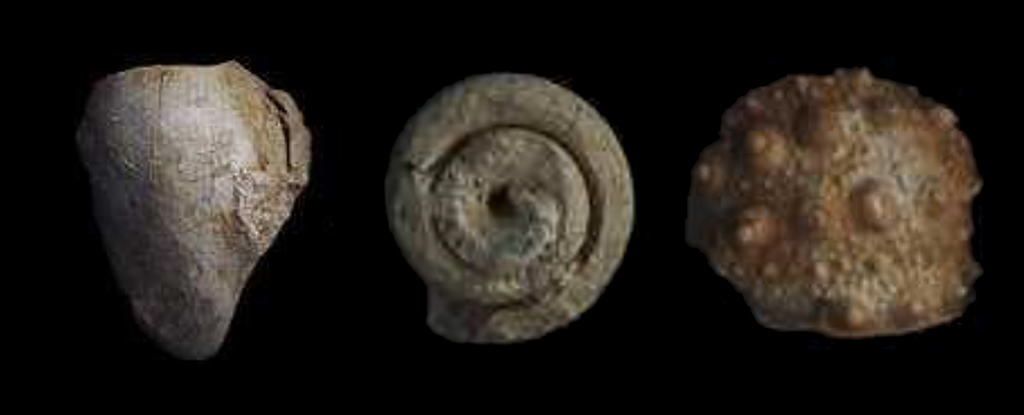Products You May Like
A new analysis of fossils found in a Spanish cave suggests Neanderthals were capable of abstract thought, before any interactions with Homo sapiens.
A total of 15 small marine fossils were found in the Prado Vargas Cave in Burgos, and according to researchers from the University of Burgos and the University of Málaga in Spain, the majority of them would have had little practical value.
That means these fossilized sea creatures were most likely collectibles, deliberately gathered by the ancient hominins for some purpose besides essential utility. This points to abstract thought, the ability to think beyond current and immediate experience, a key human trait.

“The fossils, with one exception, show no evidence of having been used as tools,” write the researchers in their published paper. “Thus, their presence in the cave could be attributed to collecting activities.”
“These activities could have been motivated by numerous tangible and intangible causes, which suggest that collecting activities and the associated abstract thinking were present in Neanderthals before the arrival of modern humans.”
The more we discover about our distant cousins, the smarter they appear to have been.
It’s not the first time that Neanderthals have been found to collect items that aren’t tools, but this haul is bigger than previous finds. Dated to around 39,800–54,600 years ago, the fossils seem to have been part of an established community camp.
However, identifying which of the “tangible and intangible causes” applies here is tricky. The researchers raise the possibility that they had ornamental value, were used in bartering, gave the group cultural identity, or perhaps were collected as gifts.
They could even have been toys for kids, as there’s evidence of children living in the cave. In short, the reasons for the collection are potentially as varied as the reasons we continue to collect items today.

“They might have been found intentionally or by chance, but their transport to the cave must have been deliberate, implying an impulse to collect these fossils,” write the researchers. “In either case, they would represent a special meaning.”
Whatever these collectibles were used for, it’s significant that there’s no evidence of early human activity in this area at the same time; it seems it’s a behavior that the Neanderthals developed all on their own.
Our inclination to collect goes way, way back – perhaps as far as half a million years – but there’s plenty of debate about when it actually did start, and with which species. The fossil haul from Prado Vargas offers some fascinating new insight into the timeline for collecting, and for considering concepts beyond the immediate here and now.
“These fossils can be understood as evidence of an artistic interest or an attraction or curiosity for the forms of nature,” write the researchers. “They do not have a utilitarian purpose and, therefore, their interpretation is controversial.”
The research has been published in Quaternary.
